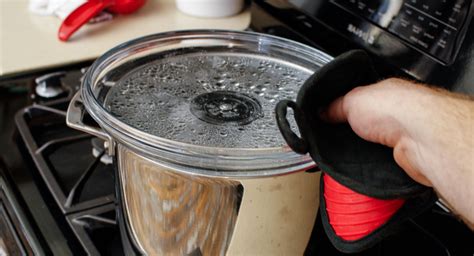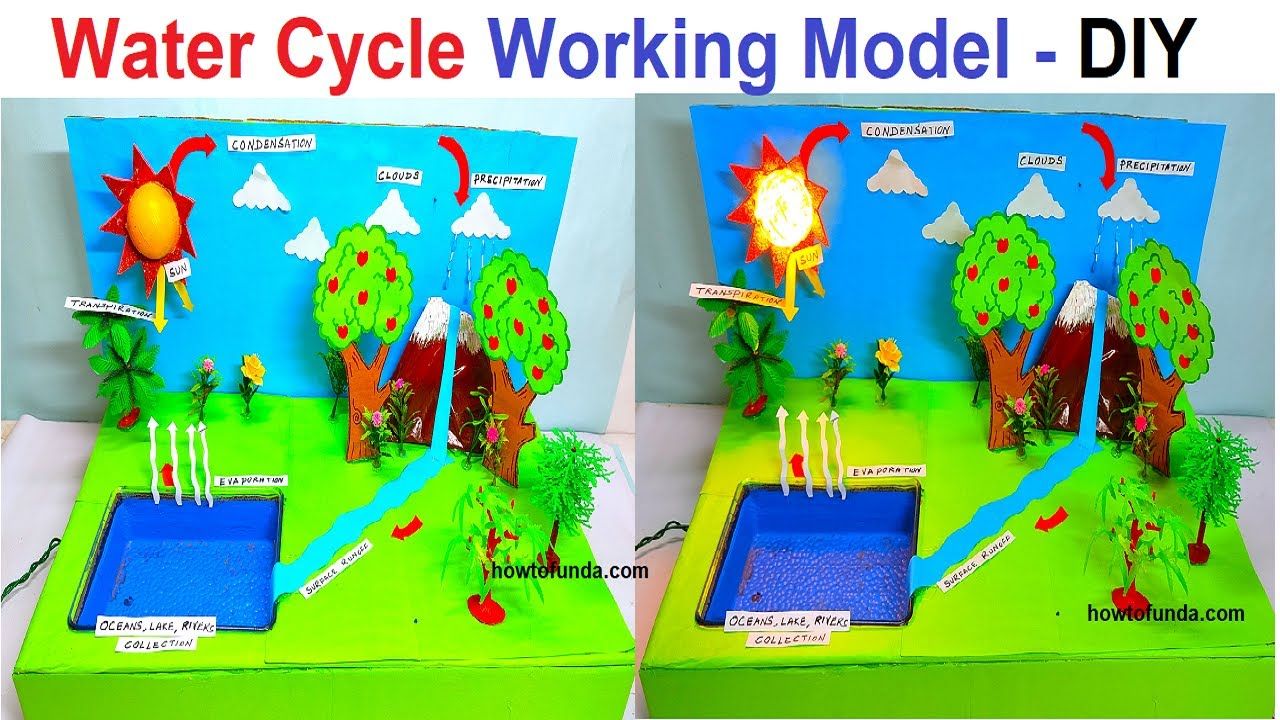How To Distill Water

Distillation is a fundamental process used in various industries and applications, from water purification for drinking purposes to advanced chemical and pharmaceutical processes. This comprehensive guide will explore the art and science of distilling water, providing an in-depth understanding of the techniques, equipment, and considerations involved.
The Science Behind Water Distillation

Water distillation is an ancient practice that has evolved into a precise and reliable method for obtaining pure water. The process leverages the unique properties of water to separate it from impurities and contaminants. At its core, distillation relies on the principle of evaporation and condensation, utilizing the distinct boiling point of water to achieve purification.
Understanding the Boiling Point
Water has a well-defined boiling point at standard atmospheric pressure, which is approximately 100 degrees Celsius or 212 degrees Fahrenheit. This means that when water is heated to this temperature, it transforms from a liquid state into a gaseous state, becoming water vapor. It is this vapor that carries the pure water molecules, leaving behind many impurities that do not evaporate at the same temperature.
The Evaporation-Condensation Cycle
In a distillation setup, the water is heated in a controlled manner, causing it to evaporate. The vapor then rises and is directed to a condenser, where it is cooled back into a liquid state. This condensation process results in the collection of pure water, as the contaminants are left behind in the original container. The key to successful distillation lies in maintaining precise temperature control and ensuring efficient condensation to maximize the purity of the distilled water.
| Temperature | Phase | State |
|---|---|---|
| Below 100°C | Unheated | Liquid |
| 100°C | Boiling Point | Transition (Liquid to Vapor) |
| Above 100°C | Vaporized | Gaseous |

Equipment and Setup for Water Distillation

Distilling water requires a specific setup to ensure efficient and safe operation. While the basic principles remain consistent, the equipment and configuration can vary depending on the scale and application of the distillation process.
Essential Components
A typical water distillation setup includes the following key components:
- Heating Source: This can be an electric heating element, a gas burner, or even solar energy, depending on the application. The heating source provides the necessary energy to evaporate the water.
- Distillation Flask: A container that holds the water to be distilled. It should be made of heat-resistant glass or stainless steel to withstand the high temperatures during evaporation.
- Condenser: A device that cools the water vapor back into a liquid state. Condensers can be air-cooled or water-cooled, with water-cooled condensers being more efficient for larger-scale distillation.
- Collection Vessel: A container to collect the distilled water as it condenses. This should be separate from the distillation flask to prevent recontamination.
- Thermometer: A thermometer is essential for monitoring the temperature during the distillation process, ensuring that the water reaches the boiling point and stays within the desired temperature range.
Configuring the Distillation Setup
The configuration of the distillation setup can vary based on the specific application and requirements. For instance, in a laboratory setting, a simple distillation apparatus with a heating mantle and a water-cooled condenser might be sufficient. On the other hand, industrial-scale distillation plants may require more complex setups with multiple distillation columns and advanced control systems.
Additionally, the choice of materials for the distillation flask, condenser, and collection vessel is critical to ensuring the purity of the distilled water. Materials that do not react with water or leach contaminants into the water during the distillation process should be selected.
The Distillation Process: Step-by-Step
Distilling water is a precise process that requires careful attention to ensure the highest quality of distilled water. Here is a step-by-step guide to the water distillation process:
Preparing the Distillation Setup
- Assemble the distillation apparatus, ensuring all components are clean and in good working condition.
- Fill the distillation flask with the water to be distilled. It is crucial to use only high-quality source water to ensure the purity of the final product.
- Connect the distillation flask to the condenser, ensuring a tight seal to prevent vapor leaks.
- Attach the collection vessel to the condenser outlet, making sure it is positioned correctly to collect the condensed water.
- Set up the heating source and connect it to the distillation flask, being mindful of any safety precautions associated with the heating element.
Distillation Cycle
- Start the heating source and monitor the temperature using the thermometer. Gradually increase the temperature until the water reaches its boiling point.
- As the water evaporates, the vapor will rise and enter the condenser. Ensure the condenser is properly cooled to facilitate efficient condensation.
- The condensed water will flow into the collection vessel, where it can be collected as pure distilled water. This process should continue until the desired volume of distilled water is obtained.
Post-Distillation Considerations
- Once the desired amount of distilled water is collected, turn off the heating source and allow the system to cool down.
- Disconnect the components carefully, ensuring no spills or leaks.
- Store the distilled water in clean, sealed containers to maintain its purity.
- Regularly clean and maintain the distillation equipment to ensure optimal performance and prevent contamination.
Applications and Benefits of Water Distillation
Water distillation has a wide range of applications and benefits, making it a valuable process in various industries and everyday life.
Purification and Drinking Water
One of the most common applications of water distillation is for the production of pure drinking water. Distilled water is free from many contaminants, including minerals, salts, and microorganisms, making it ideal for those who require the highest quality water for consumption or medical purposes.
Industrial and Chemical Processes
Distillation is an essential process in the chemical and pharmaceutical industries. It is used to separate and purify various substances, including solvents, acids, and bases. Distilled water is also a critical component in many chemical reactions, as it does not interfere with the reaction due to its lack of impurities.
Laboratory and Research
In laboratory settings, water distillation is used to obtain pure water for experiments and analyses. Distilled water ensures that the results of tests and analyses are not affected by impurities in the water, providing more accurate and reliable data.
Environmental Applications
Water distillation can also be used in environmental applications, such as wastewater treatment and desalination. By distilling contaminated water, it is possible to remove pollutants and produce clean water suitable for various purposes.
Considerations and Challenges

While water distillation is a powerful and reliable process, there are certain considerations and challenges to be aware of:
Energy Consumption
Distillation requires a significant amount of energy, especially for large-scale operations. The heating process can be energy-intensive, which can lead to higher operational costs and environmental concerns.
Contamination Risks
While distillation effectively removes many impurities, it may not eliminate all contaminants. Some volatile organic compounds (VOCs) and gases can evaporate along with the water, potentially contaminating the distilled water. Proper ventilation and air purification systems can help mitigate this risk.
Equipment Maintenance
Maintaining the distillation equipment is crucial to ensure the purity and quality of the distilled water. Regular cleaning, calibration, and replacement of worn-out components are necessary to prevent contamination and ensure efficient operation.
Future Innovations and Advances
As technology advances, the field of water distillation continues to evolve. Researchers and engineers are exploring innovative methods and technologies to improve the efficiency, sustainability, and accessibility of water distillation processes.
Energy-Efficient Distillation
Efforts are being made to develop more energy-efficient distillation methods, such as solar-powered distillation systems and heat recovery techniques. These advancements aim to reduce the environmental impact and operational costs associated with distillation.
Membrane Distillation
Membrane distillation is an emerging technology that uses semi-permeable membranes to separate water from impurities. This method has the potential to be more energy-efficient and compact, making it suitable for decentralized water purification systems.
Hybrid Distillation Systems
Combining distillation with other water purification techniques, such as reverse osmosis or ultrafiltration, can lead to more effective and comprehensive water treatment systems. These hybrid systems can address a wider range of contaminants and improve overall water quality.
What are the main advantages of water distillation over other water purification methods?
+Water distillation offers several advantages over other purification methods. It is highly effective in removing a wide range of contaminants, including minerals, salts, and microorganisms. Additionally, distillation can produce pure water without the use of chemicals, making it suitable for sensitive applications. However, it is important to note that distillation may not remove volatile organic compounds (VOCs) effectively, and proper ventilation is necessary to address this concern.
Can water distillation be used for large-scale water purification projects, such as supplying water to entire cities or regions?
+Yes, water distillation can be scaled up for large-scale water purification projects. Industrial-scale distillation plants can produce significant volumes of distilled water, making it feasible for supplying water to cities or regions. However, the energy requirements and infrastructure costs for such large-scale operations can be substantial.
Are there any safety concerns associated with consuming distilled water regularly?
+Distilled water is generally safe for consumption, as it is free from many contaminants. However, it is important to note that distilled water lacks minerals and electrolytes, which are essential for maintaining proper bodily functions. Regularly consuming distilled water may require additional supplementation to ensure adequate mineral intake.



